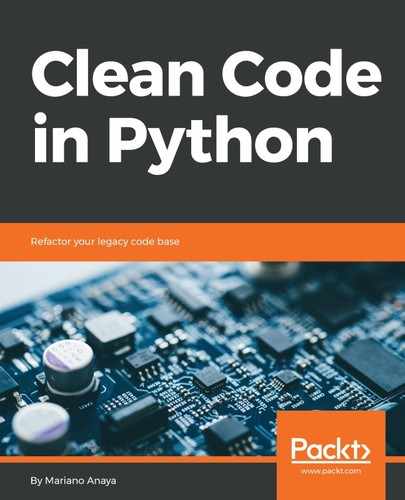This is where encapsulation appears again. From our systems (as we do in relation to the code), we want to speak in terms of the domain problem, and leave the implementation details as hidden as possible.
In the same way that the code has to be expressive (almost to the point of being self-documenting), and have the right abstractions that reveal the solution to the essential problem (minimizing accidental complexity), the architecture should tell us what the system is about. Details such as the solution used to persist data on disk, the web framework of choice, the libraries used to connect to external agents, and interaction between systems, are not relevant. What is relevant is what the system does. A concept such as a scream architecture (SCREAM) reflects this idea.
The dependency inversion principle (DIP), explained in Chapter 4, The SOLID Principles, is of great help in this regard; we don't want to depend upon concrete implementations but rather abstractions. In the code, we place abstractions (or interfaces) on the boundaries, the dependencies, those parts of the application that we don't control and might change in the future. We do this because we want to invert the dependencies. Let them have to adapt to our code (by having to comply with an interface), and not the other way round.
Creating abstractions and inverting dependencies are good practices, but they're not enough. We want our entire application to be independent and isolated from things that are out of our control. And this is even more than just abstracting with objects—we need layers of abstraction.
This is a subtle, but important difference with respect to the detailed design. In the DIP, it was recommended to create an interface, that could be implemented with the abc module from the standard library, for instance. Because Python works with duck typing, while using an abstract class might be helpful, it's not mandatory, as we can easily achieve the same effect with regular objects as long as they comply with the required interface. The dynamic typing nature of Python allowed us to have these alternatives. When thinking in terms of architecture, there is no such a thing. As it will become clearer with the example, we need to abstract dependencies entirely, and there is no feature of Python that can do that for us.
Some might argue "Well, the ORM is a good abstraction for a database, isn't it?" It's not enough. The ORM itself is a dependency and, as such, out of our control. It would be even better to create an intermediate layer, an adapter, between the API of the ORM and our application.
This means that we don't abstract the database just with an ORM; we use the abstraction layer we create on top of it, to define objects of our own that belong to our domain.
The application then imports this component, and uses the entities provided by this layer, but not the other way round. The abstraction layer should not know about the logic of our application; it's even truer that the database should know nothing about the application itself. If that were the case, the database would be coupled to our application. The goal is to invert the dependency—this layer provides an API, and every storage component that wants to connect has to conform to this API. This is the concept of a hexagonal architecture (HEX).
